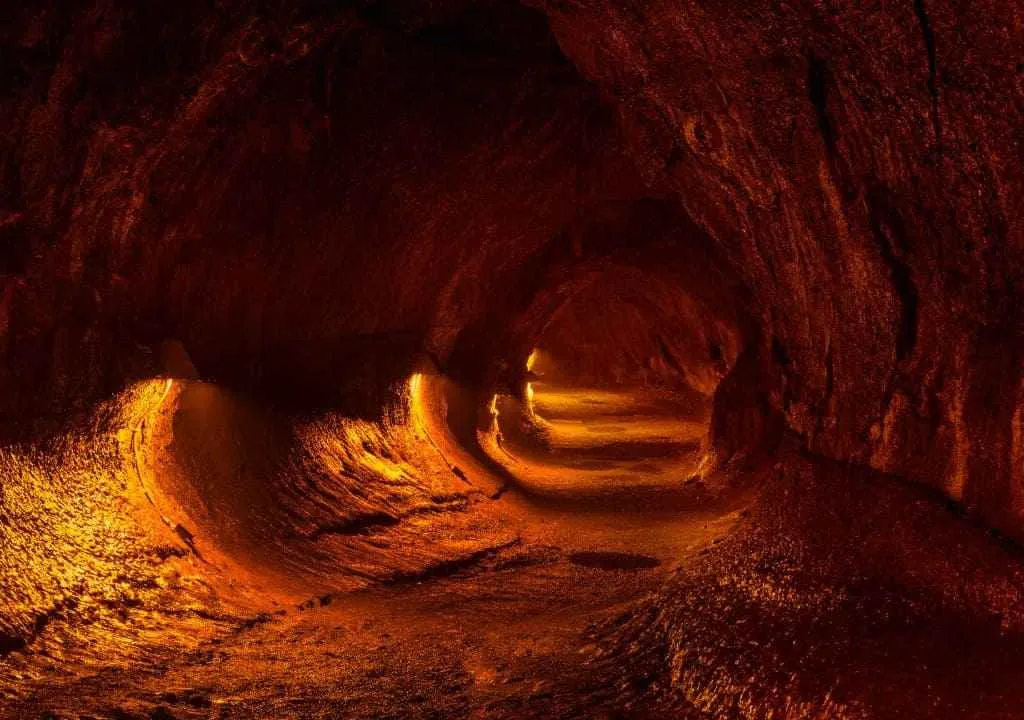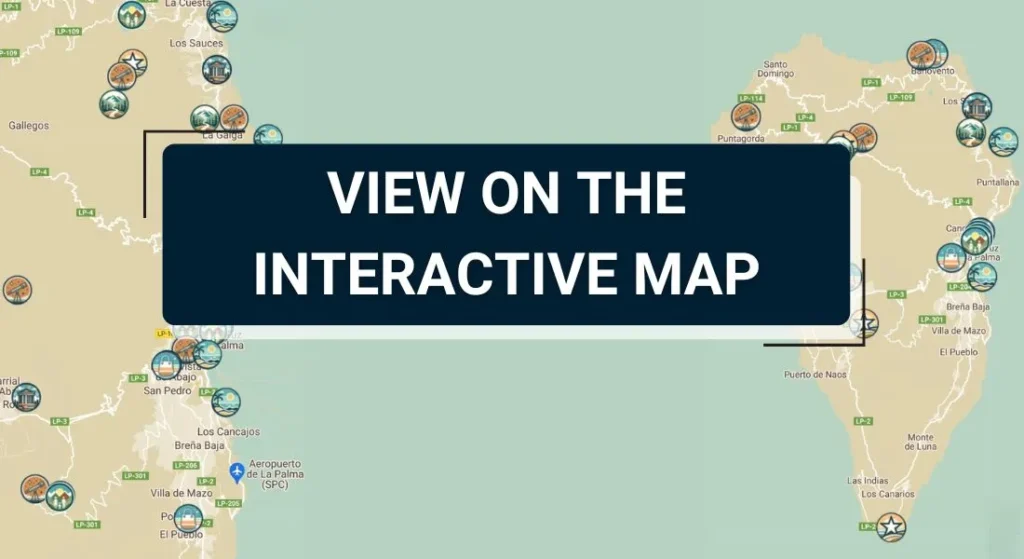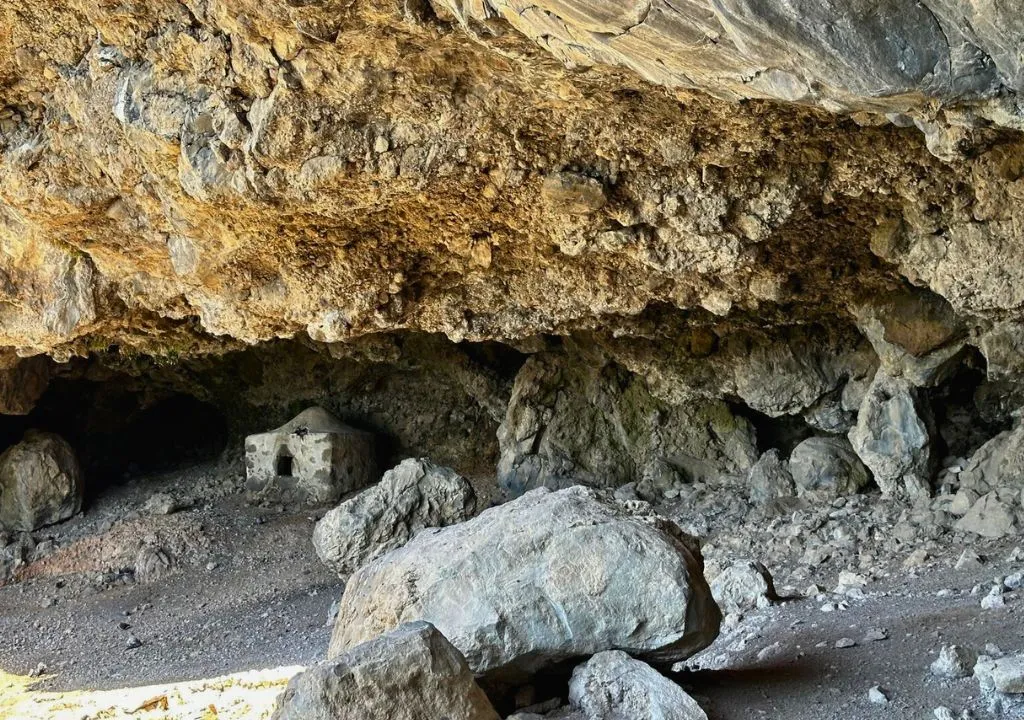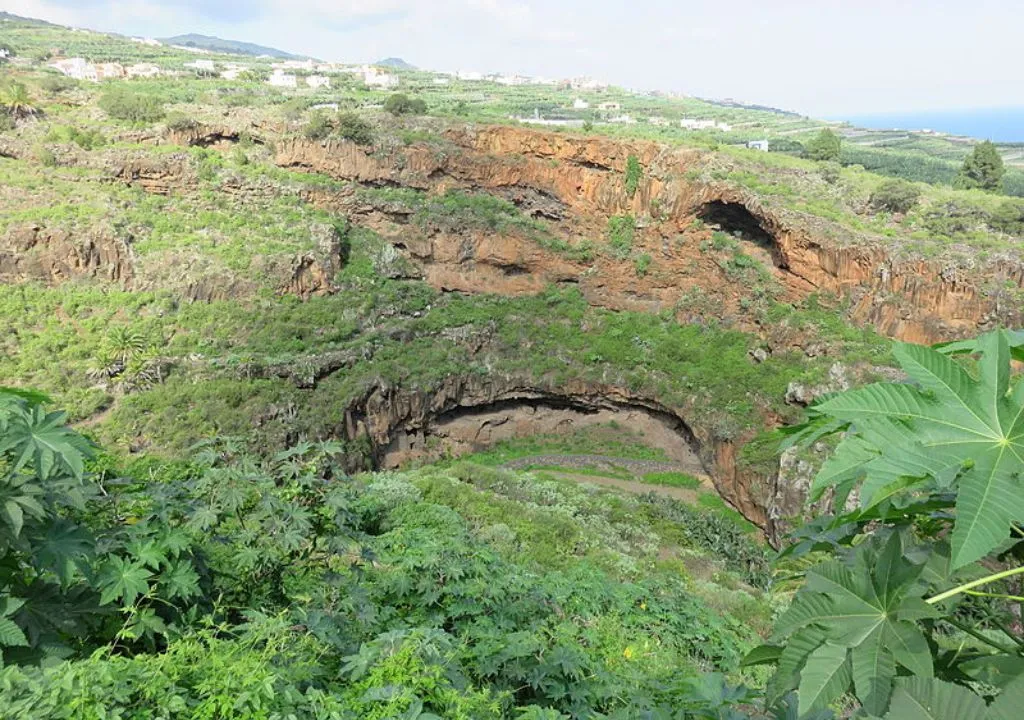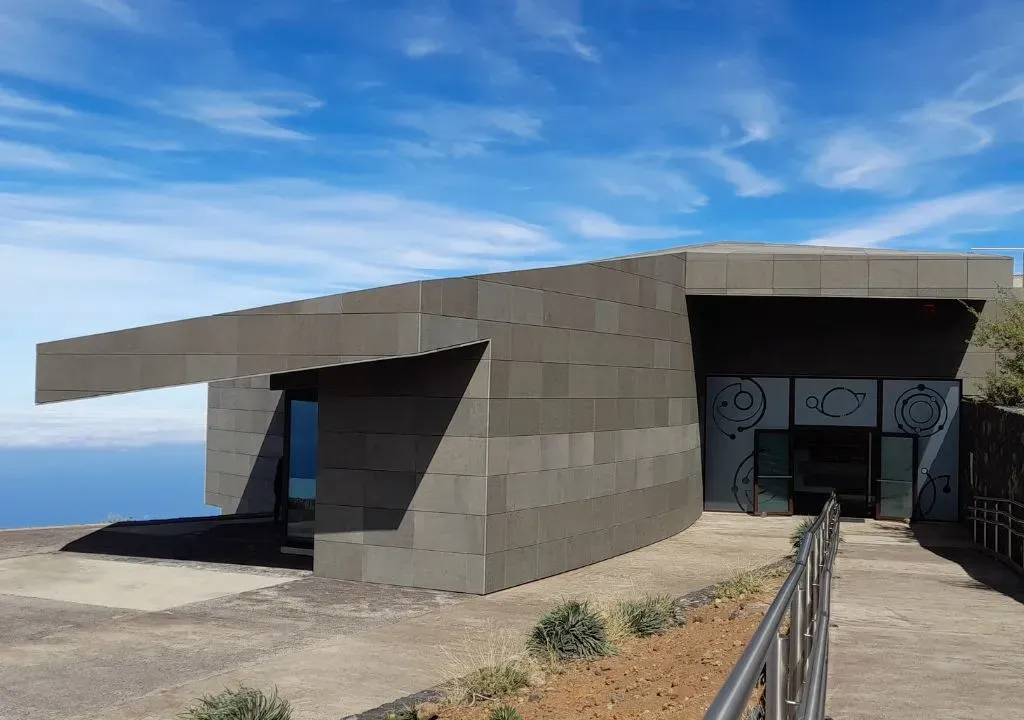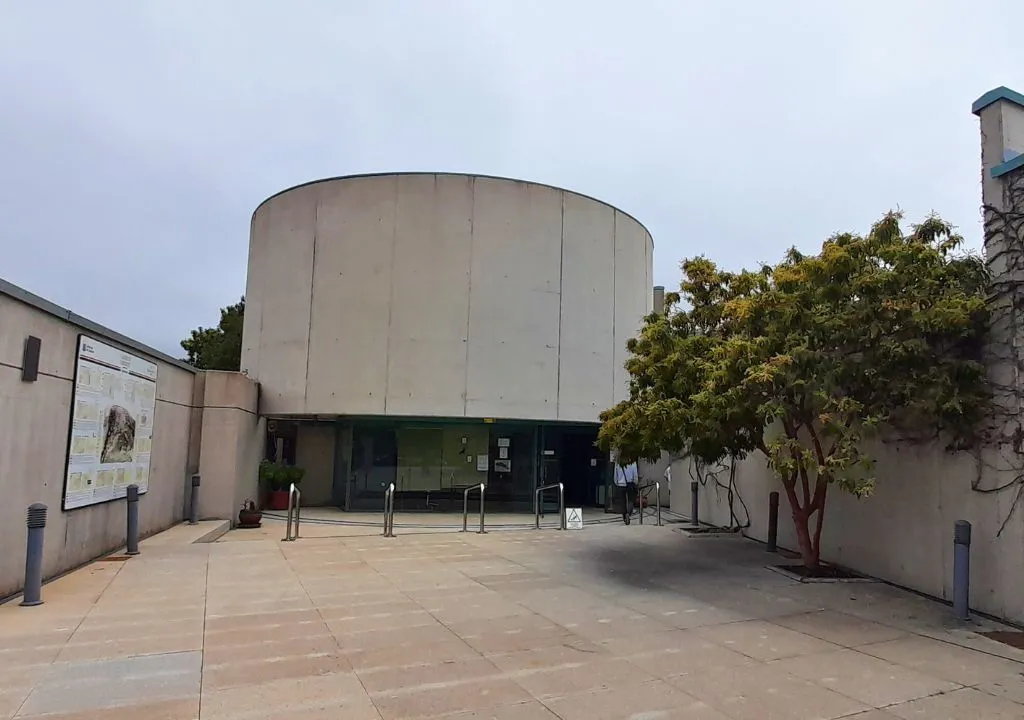Can you imagine walking through the heart of a lava river? At Caños de Fuego, one of the most fascinating spots in western La Palma, you can do exactly that. This interpretation center and its network of volcanic tubes invite you to discover how the island was formed from within, a unique, educational and unforgettable experience.
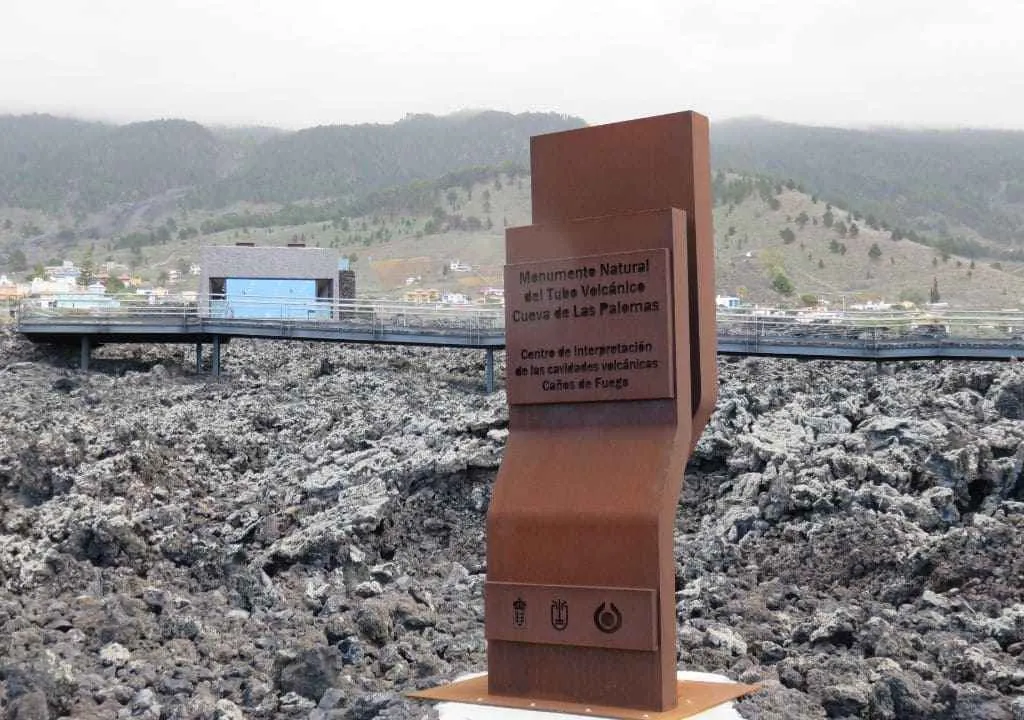
Useful Information
| Detail | Information |
|---|---|
| Address | Carretera El Hoyo – Todoque, Las Manchas, La Palma |
| Opening Hours | Monday to Sunday: 10:00 AM – 6:00 PM |
| Admission | €8.00 (general entry) |
| How to Get There | By car via the new coastal road over the recent lava flows |
| Perfect for | Geology lovers, families, hikers, and curious travelers |
A Center That Takes You to the Origins of the Island
The Caños de Fuego Volcanic Tubes Interpretation Center was created following the discovery of lava tunnels formed during the 1949 San Juan eruption. These rivers of fire carved natural underground tunnels, leaving behind a unique geological legacy.
Today, you can explore them and learn how volcanic tubes form, how the landscape evolves after an eruption, and the role volcanism plays in shaping La Palma’s rich biodiversity.
Cueva del Vidrio, A Journey Inside the Earth
Your visit includes:
- An audiovisual exhibition
- An interactive room on La Palma’s geology
- A shop and a panoramic café
- And the highlight: the Cueva del Vidrio, a guided-access tube where the rock still shines with the natural glassy finish left by the cooling lava.
The center’s knowledgeable staff will guide you through this fascinating journey into La Palma’s underground world.
Cueva de Las Palomas, A Natural Monument
Right across the road from the center lies another geological wonder: the Cueva de Las Palomas (also known as the Todoque lava tube).
With more than 560 meters in length and a gallery up to 3 meters wide, this tube is accessible via floating walkways. It has been declared a Natural Monument and is part of the Canary Islands Volcanic Heritage, recognized by UNESCO.
Visits are only possible with prior reservation and a specialized guide.
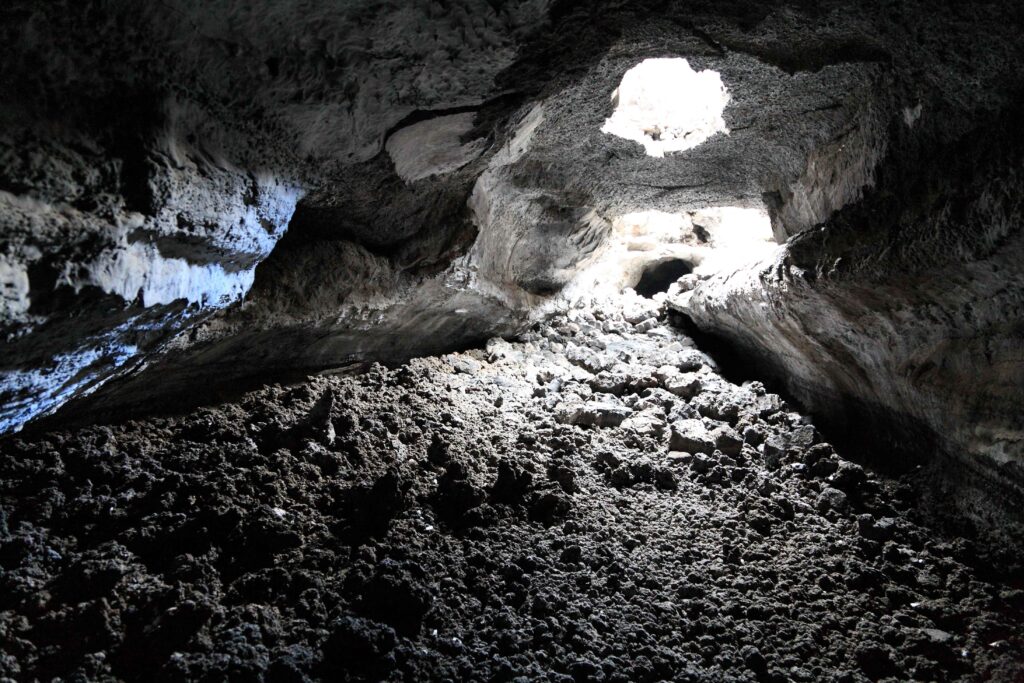
Visit the Cueva de Las Palomas
Book an excursion to visit the Cueva de Las Palomas.
What Is a Lava Tube?
A lava tube is a natural tunnel formed when molten lava flows beneath a hardened surface. When the lava flow stops, it leaves behind a hollow space, a cave made by fire.
These formations can be enormous, like the Cueva del Viento in Tenerife or Cueva de los Verdes in Lanzarote. They often harbor unique ecosystems that have evolved in darkness, far from sunlight and human activity.
On La Palma, this underground legacy is still growing: after the 2021 Tajogaite eruption, scientists are now exploring newly formed tubes, some of which could be the largest in Europe.
